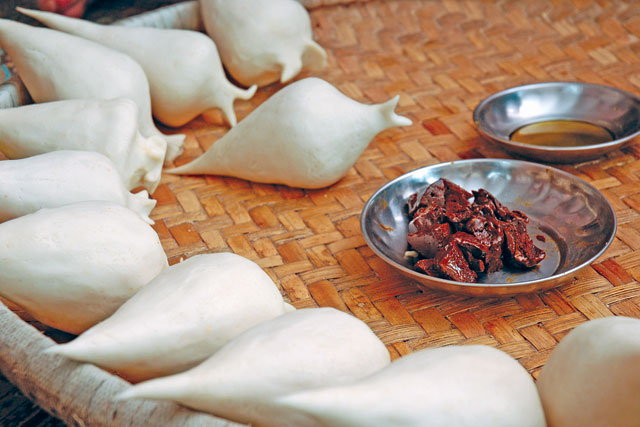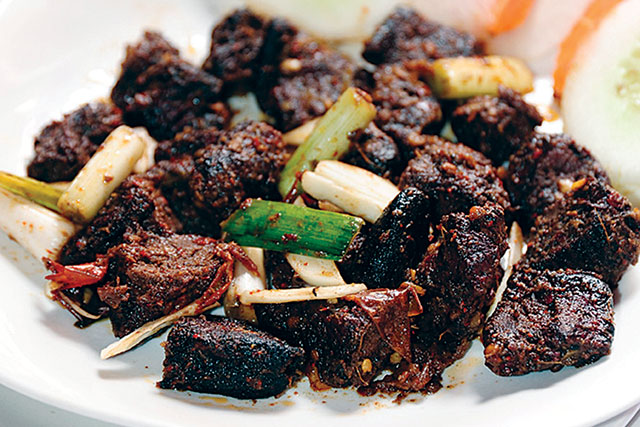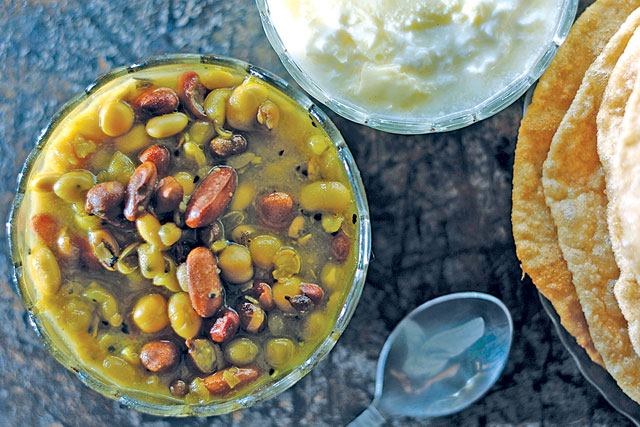
Tasty and varied dishes from around the country quicken our memories and add a memorable accent to holidays and time spent with family and friends.
The world is said to have two types of people, those who eat to live, and those who live to eat. However, in our world of life and food, we have somehow managed to merge them together into our culture and lifestyle. Foods we choose to cook, eat, and share with our families and friends present a picture of our cultural being. Whenever there is a celebration or festival, the first thing that comes to mind is the variety of food that are quite mandatory for the occasion. And why not, foods do add their very flavor into our lives, be it the joy of sweets, or the excitement of colors of spice. Some recipes are filled with bold flavors, while others carry more subtle aromas and tastes. Food is an integral part of our rituals; and at times, more than that. There are festivals, or days, solemnly dedicated for preparation and consumption of particular food items.
While enjoying a home-cooked meal with friends, you may learn something new about who they are, and what makes their food culture different from others. After a morning spent sipping coffee and eating sweets sent by my friend's mother, I was captivated by her food stories from her home in the far-west. She talked about the Gaura Parva, which is celebrated by women in the mid-west and far-western regions of Nepal by keeping a five-day-long fast. On the fifth day, the Gaura god is worshipped with paancha birudi, a mixture of five different types of cereals; black gram, wheat, two types of lentils(gahot and gurao), and pea. The fast is broken by swallowing each of these seeds raw without chewing, and later, a mixture of the same cereals is used to make a stew as the customary dish of the day.
The various dishes prepared for different occasions by different communities give them their identity. It sometimes helps us to understand their ways of living, which have existed for ages and transferred from generation to generation. It not only defines their cultural identity, but also reflects the ecological aspects of the environment they have settled in.
There is no better feeling than filling up on local produce and immersing yourself in traditional experiences with a local. Some of our festivals are guided by our agricultural routines; every occasion has a significant relationship with the agricultural routine of the season. Starting with ropain, we celebrate Ashar15 as the day to plant new saplings in the fields. This is one of the more popular festivals in the country; people sing and dance to Ashare geet, play with the mud in the fields, and eat curd with beaten rice (dahi-chiura). Those who cannot visit the fields, those in cities or in foreign countries, celebrate the day by at least eating dahi-chiura, and to blend flavors, people prepare various other complementary dishes, as well. Subsequent to Ashar, on Shrawan 15, we celebrate the day of eating rice pudding (kheer). Similarly, there are various other occasions where we celebrate the days of eating some particular food. On Janai Purnima (the sacred thread-changing festival), we eat kwati, a mixture of nine kinds of beans, rich in both taste and nutrition.

A series of festivals begins with the advent of the autumn season, starting with the eight-day- long Indra Jatra in Kathmandu Valley. This jatra is celebrated particularly by the Newari community, who are known for their rich culture and delicious cuisine. It is during this time that samaybaji, a set of Newari food items consisting of beaten rice (baji), marinated meat (choila), and soybeans is prepared. Made by families in their homes,samaybaji is also displayed with decorations in various junctions of old alleys of Newari settlements in Kathmandu. The families organize feasts (bhowe) with their loved ones, and celebrate by eating their customary dishes, along with homemade wine (ailaa) and rice beer (thwon). Similarly, the Newars also celebrate Yomari Punhi on the full moon day around the month of December, indicating the end of the rice harvest. It is celebrated by eating yomari, made out of rice flour and sweet filling, which is said to provide nourishment and strength.
It is also during the autumn season that we celebrate our biggest festivals of Dashain, Tihar, and Chhat. The Dashain tikas are made by mixing rice grains with curd and vermilion powder, which also reflects the significance of agricultural products in our traditional practices. The eighth day of Dashain is marked by the controversial practice of animal sacrifice, and Dashain is also the time of the year when meat consumption is highest all over the country. Shortly afterwards, we celebrate our next big festival of Tihar, which is known as the festival of lights. It is during this very time when there is a fragrance of homemade sweets in many homes, particularly of sel-roti,which is cooked mostly at this time.
I spent a large part of my childhood in the region of Janakpur. Cycling around the less traveled roads and soaking up the atmosphere while tasting Janakpuri meals was among my favorite pastimes. Among the many rituals in the region, Chhath is the most prominent one. It involves worshipping of the Sun, and preparation of flavor-filled foods like thekuwa(cookies made of wheat flour) and kheer.

Apart from the traditional celebrations, in modern-day celebrations, too, food plays an important role. While old traditions are evolving, new customs are also being introduced. Be it momo parties or barbeques, gatherings are hosted for friends and families to get together once in a while, with food being the medium to bind them closer. The significance of food to rituals is further demonstrated by the crucial role of cakes in birthday celebrations. Similarly, today, the success of wedding events is measured by the quality and taste of food served. In addition, social media sites have played a catalytic role in promoting our food culture; taking photos of food and uploading on Instagram, and enjoying other people’s food-shots has become part of our lifestyle.
All in all, food plays a large part in making our otherwise mundane lives spicier, and adds robust flavor to our colorful festivals.










